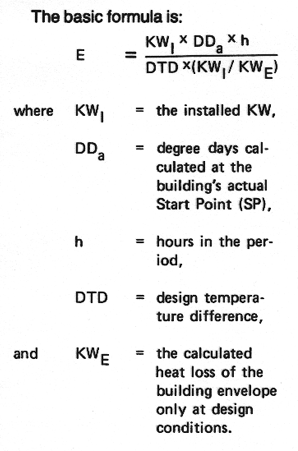|
GO BACK
The
patented PACE® System uses the unique heating design concept
of Thermal Energy Replacement"" to control perimeter heat. Thermal
Energy Replacement is the continuous matching of heating system
output to the instantaneous heat loss of the building envelope.
The heat is delivered just inside the perimeter walls by baseboard
convectors or radiant panels. The ratio of active heater length
to lineal feet of perimeter wall should be 60 percent or higher
for optimum performance. In practice, all PACE applications to date
have utilized electric heat due to its precise controllability.
The process of continuous matching produces a steady-state thermal
balance which differs fundamentally from conventional heating cycles.
The balance point is 6 to 12 degrees lower than a typical thermostatic
setting, yet the steadystate condition yields superior comfort.
This apparent contradiction has been explained by independent research
on occupant comfort. A small degree of heat loss from the occupant
to the perimeter wall actually improves comfort, providing that
the rate of heat loss stays constant. Thermal Energy Replacement
satisfies this condition.
The tower balance point at which Thermal Energy Replacement operates
represents a reduction of 25 to 50 percent in heat output as compared
to the conventional thermostatic response. PACE control also allows
fine tuning of the balance point and system response to match the
building's actual heat loss characteristics, virtually eliminating
control error as a factor in total consumption.
General:
The PACE Perimeter Heat Control System operates on the concept of
Thermal Energy Replacement'", defined as the continuous matching
of heat output to the building envelope's instantaneous heat loss.

The PACE System calculates the instantaneous heat loss and expresses
it as a percentage of the installed heating capacity.
GO
BACK
|
The
heat output is the base signal at outdoor temperature (t), times
the installed capacity, or

when
multiplied by the time, h, the product is kilowatt hours for the
period. HEAT LOSS AND HEAT OUTPUT ARE ONE AND THE SAME CALCULATION,
which accounts for the accuracy of both the PACE control and the
weatherbased energy consumption projection. The only exceptions
are: (a) weather variation from 10-year average; (b) wind effect,
which increases PACE output slightly; and (c) solar effect, which
decreases PACE output in proportion to solar gain per exposure.
Energy
Assessment Program: The above formula establishes the cumulative
heat output for a given period. Because ventilation and infiltration
loads usually are met by internal heat gains, the calculated envelope
loss may be regarded as the building's minimum heat energy requirement.
An Energy Assessment Report may be ordered from General Electronic
Enterprises, Inc. for any planned or existing building.
The Energy Assessment Program is not a design program for heating,
air conditioning or building envelope systems. General Electronic
Enterprises, Inc. accepts no responsibility or liability for the
accuracy of the load data, consumption analysis or economic analysis;
or for the suitability of the building's mechanical systems or building
envelope design for the PACE concept or implied warranty of merchantability
or fitness for a particular purpose. In no event shall General Electronic
Enterprises, Inc. be liable for any incidental or consequential
damages.
Notwithstanding
the above disclaimers, the methodology for PACE consumption is known
to be an accurate weather-based computation using typical calibration
for a variety of building types and mechanical systems. Comparisons
with other systems use standard ASHRAE degree-day methodology for
operating cost estimation.
|